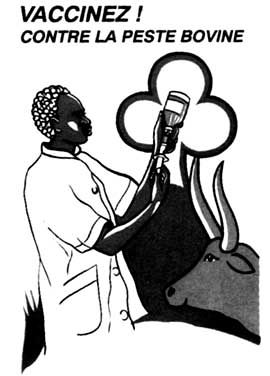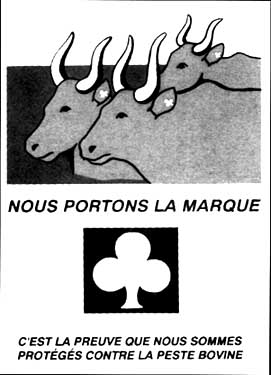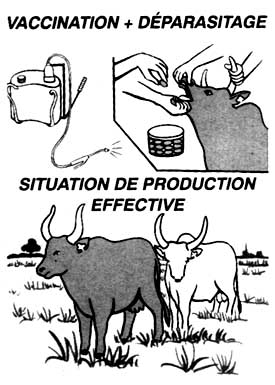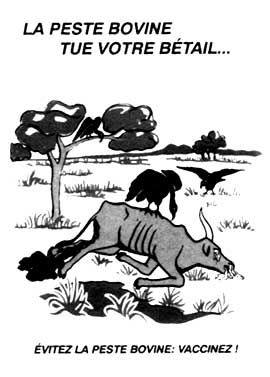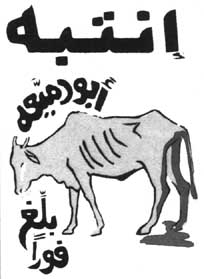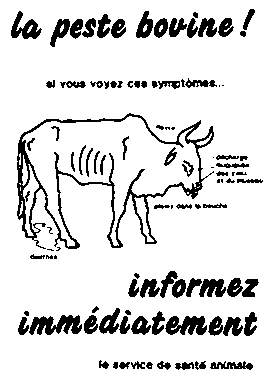Livestock reproduction in Latin America
IAEA. 1990. Vienna. 446 pp.
Latin America is a region with vast and varied animal resources, consisting not only of the more conventional domesticated species such as cattle, sheep and goats, but also of such indigenous species as the llama, alpaca and vicuña. The meat, milk, wool and/or hides of these animals are important to all countries of the region, providing food and clothing for the population, valuable export earnings and, perhaps most important of all, employment and income for a large proportion of the poorer people living in the rural and highland areas.
As most animals are reared in areas where the climate is harsh, they are subjected to stresses caused by extreme temperatures, high humidity, the seasonal availability and low nutritive value of indigenous pastures and an insufficient water supply. It is therefore hardly surprising that the efficiency of livestock production in the region is invariably low and, as a result, the availability of animal products and income is much reduced.
One of the principal ways of increasing livestock productivity is to improve reproductive efficiency, which to a large extent can be achieved by reducing the generation interval. It is well known that this period of time can be exceptionally long in many Latin American countries and it requires a thorough investigation of the common reproductive problems encountered under different environmental and management conditions in the region. Programmes will need to be formulated at field and small-farm levels. With this in mind, FAO and the International Atomic Energy Agency, through the joint FAO/IAEA Division of Nuclear Techniques in Food and Agriculture, initiated a coordinated research programme in 1984 with the aim of improving the reproductive management of milk-, meat- and fibre-producing livestock in Latin America. In 1985, an extended project was established in collaboration with IAEA's Department of Technical Cooperation under the ARCAL (Arreglos Regionales Cooperativos para la Promoción de la Ciencia y la Tecnología Nucleares en América Latina) programme, involving 21 research institutes from 14 countries.
Unfortunately, the coordinated research programme did not include some less conventional but very useful species such as rodents, guinea pigs capybara and rabbits, which are perfectly tailored to the needs of poor small farmers while providing them with additional income.
After Peru and Costa Rica, where meetings were held in 1984 and 1986, respectively, Colombia hosted the final research coordination meeting in September 1988. The papers submitted at this meeting are found in this publication. Divided into four sections - dairy (intensive and dual purpose), beef, sheep and goats, and camelids - this very commendable book covers most effectively the results and conclusions of the four-year programme.
This IAEA publication can be obtained from the Division of Publications, International Atomic Energy Agency, Wagramerstrasse 5, PO Box 100, A-1400 Vienna, Austria, or from UNIPUB, 4611-F Assembly Drive, Lanham, MD 20706-4391, USA. It can also be purchased from major local booksellers in most countries of the world.
G.H.F.
Food animal pathology and meat hygiene
D.C. Herenda & D.A. Franco. 1991. St Louis, MO, USA, Mosby - Year Book, Inc. 354 pp.
This publication is the result of the authors' more than 20 years' experience in practical work and research on food animal pathology and meat inspection. Highlighted are 355 cases of cattle, pig, sheep and goat diseases, and ante-mortem, post-mortem, histological and microbiological findings are briefly discussed. The short texts on pathological and histological findings are accompanied by 646 colour photographs. The manual is divided into 21 chapters reflecting lesions of the different organ systems, neoplasia, viral, bacterial and fungal diseases and exotic animal diseases.
The many excellent colour photographs together with the short concise text make this publication a very useful handbook for those involved in practical work in meat inspection. This includes not only veterinarians but also veterinary assistants and students, as the text is clear and may be understood by readers who are less scientifically trained. Contrary to most meat inspection handbooks, this publication also refers to hazards caused by faulty treatment of meat, such as spoilage factors, bone taint, moulds and the con-tamination of carcasses, and it discusses the Hazard Analysis and Critical Control Point (HACCP) concept in meat plants. These chapters are very useful for lay meat inspectors and students in particular, as an overview of the sanitary control of meat, which is often neglected in courses or training focusing only on meat inspection, is provided.
Copies of this publication may be obtained by writing to the publisher: Mosby-Year Book, Inc., 11830 Westline Industrial Drive, St Louis, MO 63146, USA.
G.H.
Growth regulation in farm animals: advances in meat research
A.M. Pearson & T.R. Dutson. 1991. Barking, Essex, UK, Elsevier Science Publishers Ltd. 629 pp.
As a result of the increased health-consciousness of consumers in recent years, particularly in developed countries with abundant food supplies, limiting fat intake has become an important issue in good health care. In response to the demands of consumers, reduction of the fat content in meat is now a major interest in animal production, and one way to achieve this is through the regulation of growth in farm animals.
The publication, which is composed of 18 chapters written by different specialists, refers to all important aspects of growth regulation in livestock. The first chapter gives an overview of growth factors in animal tissues (muscle, adipose tissue and bone). The following chapters describe growth regulation mechanisms, such as hormonal regulation, genetics and trans-genetics of growth, effects of nutritional control, compensatory growth, protein accretion, influence of sex and castration, anabolic agents, ionophores, antibiotics, somatotropin, photoperiod and the influence of beta-adrenergic agonists and similar compounds. The effects of growth on meat quality and the prospects for genetic manipulation of muscle growth are discussed as well. The last chapters refer to growth control in the future, including animal production environment, hypertrophic growth processes and opportunities for favourable intervention in growth processes.
The regulation of growth in farm animals is a subject of great interest to animal scientists and livestock producers, who will find in this publication updated scientific data and recent research results. The handbook will also be a source of detailed information for muscle biochemists and meat scientists.
The publisher's address is Elsevier Science Publishers Ltd. Crown House, Linton Road, Barking, Essex 1G11 8JU, UK.
G.H.
Meat hygiene
J.F. Gracey & D.S. Collins. 1992. 549 pp.
Meat hygiene by Gracey has been for many years a most useful compendium for those involved in meat hygiene and meat inspection. Now the ninth edition of this handbook has been published after an interval of six years.
In this edition, account has been taken of some important changes that have occurred in the meat industry in several countries. In particular meat inspection regulations have been revised in many places to improve efficiency and cost-effectiveness. Consumer concern about the safety and quality of meat and meat products has grown, as has public interest in animal welfare at slaughter. Updated information on current problems in the meat sector such as bovine spongiform encephalopathy (BSE) and residues in meat have been incorporated. Besides the many black and white photographs and drawings, a series of new colour photographs has been included in the new edition.
Despite the addition of these colour photographs and the extensive updating of each chapter, the layout of the book, which has proved useful over the years, remains rather unchanged compared with previous editions. A broad range of subjects is covered, including food animals, meat quality, meat plant construction, equipment operations and sanitation, treatment and disposal of by-products, pre-slaughter handling and humane slaughter, ante- and post-mortem inspection, meat hygiene practice, meat preservation, chemical residues, food poisoning, meat microbiology, infections and zoonoses, pathology, different livestock diseases and affections of specific parts and the inspection of poultry and wild deer.
This new edition of Meat hygiene will certainly be a valuable source of information not only for specialists such as veterinarians, meat hygienists or meat inspectors, but also for those dealing with food products of animal origin and for interested laymen.
The publisher's address is Baillière Tindall, 24-28 Oval Road, London NW1 7DX, UK.
K.A.
Les harnachements pour bovine de l'Europe à l'Afrique.
G. Le Thiec. 1991. CIRAD-SAR, Montpellier, France. 41 pages. Prix: 50 FF.
En Europe, il existe une longue tradition sur les modes de harnachement des animaux de trait. Après un bref historique des divers systèmes utilisés, l'auteur décrit dans le détail quelques harnachements originaux identifiés en Italie et en Galice (Espagne). Simples et peu coûteux à réaliser, ils pourraient être aisément transférés dans les pays en développement, moyennant quelques aménagements expérimentés sur le terrain. Le document est détaillé et fournit, dans un style clair et concis, des renseignements intéressants sur la forme, l'utilisation, les avantages et les inconvénients des principaux types de jougs. Les illustrations et les photos vent de bonne qualité.
S'adresser au CIRAD-SAR, avenue du Val de Montferrand, BP 5035, 34032 Montpellier Cedex, France.
J.C.C.
Roots, tubers, plantains and bananas in animal feeding
D.H. Machin & S. Nyvold, eds. 1992. Animal Production and Health Paper, No. 95. Rome, FAO. 289 pp.
An FAO Expert Consultation on Roots, Tubers, Plantains and Bananas in Animal Feeding was held in Colombia at the International Centre for Tropical Agriculture (CIAT) near Cali from 21 to 25 January 1991. The proceedings of this consultation have now been published in this Animal Production and Health Paper.
The problems associated with increasing the total amount of feed destined for animal production through increasing the production of roots, tubers and plantains are varied and complex, particularly since the production of these products for animal consumption generally competes with that for direct human consumption in the country of origin. A secondary but nonetheless very important factor is that cereals, because of their protein content of between 8 and 11 percent or more, generally contribute up to one-half of the crude protein needs in a diet, which would be impossible if roots and tubers were used at the same level in the ration.
This publication contains 18 articles on all phases of the production and utilization of root crops, tubers, plantains and bananas for animal feeding. Two overview articles are followed by ten articles covering all aspects of cassava, from its agronomic needs, to the processing of its roots and leaves into animal feeds, and finally to its use in pig and poultry diets. Statistics on the production of sweet potato, its cultivation, composition and usage are provided. Three final papers review potential animal feeding systems emphasizing roots, tubers and bananas.
Respected researchers working on the potential for these feedstuffs to partially replace imported cereals in their respective countries gathered at this Expert Consultation to emphasize the possible role of these products in animal nutrition. One of the contributors in fact challenged researchers in Asia, Central America, South America and Southeast Asia to determine the productivity of rabbits fed free-choice on forages and either cassava, bananas or sweet potatoes with no processing. Perhaps some of our readers might do just that!
R.P.
Isotope and related techniques in animal production and health
Proceedings of a Symposium on Nuclear and Related Techniques in Animal Production and Health. IAEA/FAO. 1991. 612 pp.
The papers published in this book comprise the proceedings of this international symposium held in Vienna from 15 to 19 April 1991 and jointly organized by the International Atomic Energy Agency (IAEA) and FAO. Much of the work described in the 61 presentations was conducted within developing countries. The symposium was to provide a forum for livestock production and health specialists in developing and developed countries to review advances in the nutrition and reproduction of ruminant and other herbivorous animals, as well as new approaches to disease diagnosis and control.
The general theme of the session on animal nutrition was the feeding of ruminant animals whose diets consist mainly of poor-quality roughage. Particular emphasis was given to how the principles developed from the use of tracer techniques based on isotopes and other methods could be used in practice to improve animal growth and productivity.
During the session on animal reproduction and breeding, advances in the development of highly sensitive radioimmunoassay methods for measuring the concentrations of reproductive and other hormones were considered. Examples were also provided of how these methods can be used to assess the reproductive status of animals.
The session on animal health focused on developments in the use of enzyme-linked immunosorbent assays, not only for the diagnosis of diseases with major relevance to developing countries, but, perhaps more important for the future, for monitoring the effectiveness of large-scale vaccination programmes and conducting epidemiological surveys. Some of the new approaches to diagnosis, vaccine production and increasing animal resistance to disease that have resulted from developments in molecular biology were also discussed.
In sum, this book provides very interesting reading since its authorship is truly international and the information provided comes from a wide variety of experiences, disciplines and animal production systems.
The book can be obtained from the Division of Publications, International Atomic Energy Agency, Wagramerstrasse 5, PO Box 100, A-1400 Vienna, Austria, or from UNIPUB, 4611-F Assembly Drive, Lanham, MD 20706-4391, USA. It can also be purchased from major local booksellers in most countries.
G.H.F.
Proceedings of an International Workshop on Livestock Production in Rural Development
NECTAR. 1992. Price: US$25, including postage.
This workshop, held in Wageningen, the Netherlands, from 20 to 31 January 1992, was organized by the Netherlands' Centres for Training on Animal Resources Management (NECTAR) and sponsored by the European Community and the Netherlands' Ministries of Foreign Affairs and of Agriculture. Thirty-eight senior policy-makers and executives participated. They were mainly from developing countries and had a professional background in livestock production. Some representatives from donor countries also attended.
The two major objectives of the workshop were to provide a forum for discussion on national and international issues of livestock policy development and to strengthen the capacity of the participants to develop strategies dealing with these issues.
The proceedings of the workshop can be obtained from NECTAR, PO Box 88, 6700 AB Wageningen, the Netherlands.
Cattle: a handbook to the breeds of the world
V. Porter. London, Christopher Helm - A. and C. Black. 400 pp. ISBN: 0713680008.
Price: £39.99.
This is an authoritative and elegant book. It is comprehensive, describing in detail nearly every variety and breed of cattle in the world. It also covers wild Asian cattle and their domesticated forms, as well as the yak and the bison. It includes a chapter on the swamp and riverine buffalo. The text takes the reader through the cattle of Europe, Africa, Asia, the Americas, Australia and New Zealand. First, however, it provides an overview of the origin of cattle, their domestication and geographic spread and a brief section on principles of genetics and breeding. Maps showing the distribution of breeds are provided in each regional section. The material presented on each breed includes a historical summary, information on current use and performance levels. Any special production traits are mentioned. The breed names are given in the local language in addition to English. Regional groupings of breeds are accompanied by attractive coloured plates with sketches of a typical animal of each of the 250 breeds. Helpful tables that summarize the impact of a breed of particular influence and show its contribution to other breeds in different locations are provided. Several appendixes supply a glossary of terms as well as lists of cattle breeds and their synonyms, endangered European cattle breeds and some extinct breeds.
Previous books on cattle breeds were often preoccupied with the fine detail of unimportant points of physical description. This book avoids that approach by giving the essentials of a breed's appearance in colour form and then in the text focuses on its origin, use and place in the world today.
Science and development agencies are currently creating animal genetic data banks, which are computer systems holding characterizations of livestock breeds. These characterizations are mainly in numeric form and, in the future, they will become a most valuable resource for those making project decisions about the need to preserve, or the opportunity to improve, the productivity of cattle through cross-breeding or breed substitution. Animal genetic data banks serve a special utilitarian purpose; however, they will never replace a book of this type, which brings to its readers the delights of holding a panorama of all cattle breeds of the world in their hands.
This book gives the reader the historical background and the practical production ability of each breed and puts each one in its current geographical and cultural settings. It has been well researched, is professional in style and attractive in presentation. It will be of interest both to laymen and to specialists in professional life and in times of relaxation.
For copies of this book, please write to the publisher: Christopher Helm - A. and C. Black, 35 Bedford Row, London WC1R 4JH, UK.
J.H.
Avances y perspectivas del conocimiento de los camélidos sudamericanos
S. Fernández-Baca, ed. 1991. Oficina Regional de la FAO pare América Latina y el Caribe, Santiago, Chile.
Doce autores concentran en este libro una gran cantidad de información sobre los camélidos sudamericanos. Las especies domesticadas - llamas y alpacas - y las silvestres - guanacos y vicuñas - suman unos 5 millones de individuos. En el capítulo inicial se describe el origen, evolución y situación actual de los camélidos. Se compare la evolución del pastoreo de caprinos, ovinos y bovinos en el Viejo Mundo (donde la antigüedad de esta actividad se ha podido comprobar a través de los grabados en tabletas cuneiformes) con el manejo de los rebaños de alpacas y llamas en América del Sur. En el Nuevo Mundo dicha ganadería se ha ido reduciendo desde la Conquista, y poco se sabe de la ganadería de las civilizaciones andinas, que carecían de escritura.
Los siguientes capítulos describen la anatomía, fisiología reproductiva, genética, nutrición, enfermedades, fibras y calidad de la carne de los camélidos sudamericanos. Se comentan las razones por las cuales las llamas pueden resistir la sequía de la pradera altoandina, y se explica por qué en estas especies existe una relación estrecha entre el consumo de agua y de materia seca. Comparadas con otras especies, se constata una menor pérdida de agua en las heces, debido a una menor excreción fecal. Varios autores se refieren al hecho de que la llama no ha sido mejorada genéticamente, a pesar de ser más eficiente y útil que la oveja o el vacuno en el hábitat altoandino. Se señala que quedan solamente unos cuatro millones de llamas, y que la población de alpacas ha disminuido en casi un millón de cabezas en los últimos 25 años.
En el capítulo conclusivo se pone de relieve el interés que reviste la cría de camélidos sudamericanos pare fines recreativos en países de otros continentes, y se advierte la falta de recursos que dificulta la implantación, en América del Sur, de un sistema de extensión o asistencia técnica eficaz. En los Estados Unidos, en cambio, los ganaderos cuentan con abundantes medios pare el manejo de una población de 50000 llamas; existe además una asociación de criadores y un sistema oficial de registro de nacimientos.
Amén de su valor científico, este volumen debería servir pare sensibilizar a los ganaderos deseosos de fortalecer la cría de camélidos en América del Sur.
PAN-AFRICAN RINDERPEST CAMPAIGN (PARC)
CAMPAIGN COMMUNICATION FOLDER
This is a guide and kit comprising media materials (flip charts, posters, a logo and leaflets) for the purpose of gaining of the cooperation of livestock owners in the Pan-African Rinderpest Campaign.
The campaign, with its vaccination and control measures, has also; endeavoured to revitalize national livestock and veterinary services in Africa.
CAMPAGNE PANAFRICAINE CONTRE LA PESTE BOVINE (PARC)
POCHETTE COMMUNICATION POUR LA CAMPAGNE
Cette pochette, qui contient un guide de communication pour la Campagne et des prototypes de matériel graphique (emblème, timbre-poste, tableaux á feuilles mobiles, affiches, tracts, photos), est destinée à obtenir le concours des propriétaires de bétail dans la Campagne panafricaine contre la peste bovine.
La PARC, outre la vaccination et les mesures de lutte, vise à donner un nouvel élan aux services zootechniques et vétérinaires nationaux en Afrique.
CAMPAÑA PANAFRICANA CONTRA LA PESTE BOVINA (PARC)
CARPETA DE COMUNICACION PARA LA CAMPAÑA
Se ofrece aquí una guía y un luego de materiales de comunicación (rotafolios, carteles, un logo y folletos) destinados a lograr la cooperación de los propietarios del ganado en la Campaña Panafricana Contra la Peste Bovina.
La Campaña, con sus medidas de vacunación y control, tiene también por objeto revitalizar los servicios zootécnicos y veterinarios en Africa.
PAN-AFRICAN RINDERPEST CAMPAIGN (PARC)
CAMPAIGN COMMUNICATION FOLDER
CAMPAGNE PANAFRICAINE CONTRE LA PESTE BOVINE (PARC)
POCHETTE COMMUNICATION POUR LA CAMPAGNE
CAMPAÑA PANAFRICANA CONTRA LA PESTE BOVINA (PARC)
CARPETA DE COMUNICAClON PARA LA CAMPAÑA
For copies of this kit (in English and French) or for slides and additional information, please write to:
Cette pochette est disponible en français et en anglais. Pour recevoir cette pochette ou toute autre information sur la PARC, prière de contacter:
Para obtener la guía y el juego de materiales (en inglés y en francés), o diapositivas e información adicional dirigirse a:
Jonathan Villet Regional Communication Adviser
OAU/IBAR/PARC, Coordination Unit
PO Box 30470, Nairobi Kenya
Telex 23016 Fax 254-2-3345
